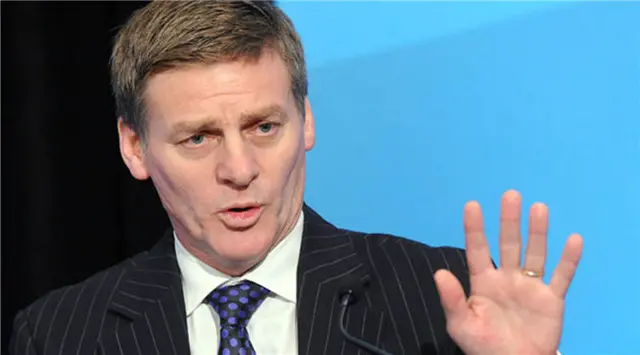New Zealanders now have a clear choice for a new flag, Deputy Prime Minister Bill English said Tuesday after the final result of last month's referendum on five possible alternatives.
The Electoral Commission announced the winner was a stylized white fern on a black and blue background with the four red stars of the Southern Cross.
The design will go head to head with the current flag, which features the British Union Jack in the top left corner, in a second referendum in March next year.
The winner of that poll will become or remain the official New Zealand flag.
The winning result took 50.58 percent of the allowable votes in a complex progressive ranking system, although another design of a white fern on a red and blue background gained more first-choice votes.
Voter turnout was 48.78 percent, or almost 1.55 million of the 3.17 million voters enrolled.
"This is an historically significant choice we have in front of us," English said in a statement.
"We now have some time to consider the two flags side by side and have a good think about which one of them best represents us as a nation now and into the future," he said.
"I'd encourage everyone to have an input in this decision - even for those who didn't vote in the first referendum."
Four of the five options in the first referendum were stylizations of the country's native fern, while the fifth, dubbed "Red Peak," was an arrangement of red, blue and black triangles around a white chevron.
The process has been marred by controversy and rancor among the political parties since it was initiated by Prime Minister John Key after last year's general election.
Critics of the present flag, including Key, who has repeatedly stated his preference for a fern design, say it is too similar to the Australian flag and that it is a hangover from the country's colonial past.
The entire project is expected to cost over 25 million NZ dollars (17 million U.S. dollars).
Political opponents have described it as a waste of money and a "vanity project" of the prime minister, while critics of the designs have criticized them as no better than marketing logos.
 简体中文
简体中文

